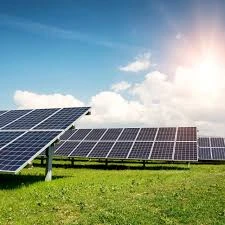bifacial solar cells
Exploring Bifacial Solar Cells A New Era in Solar Energy Technology
Bifacial solar cells represent a significant advancement in solar technology, offering numerous benefits over traditional monofacial solar panels. As the world shifts towards renewable energy to combat climate change, understanding and harnessing the potential of bifacial solar cells is crucial for a sustainable future.
Unlike standard solar panels that absorb sunlight on one side, bifacial solar cells capture solar energy from both their front and rear surfaces. This unique design allows them to harness reflected sunlight from surrounding surfaces, such as the ground or nearby structures, leading to a substantial increase in energy generation. Research indicates that bifacial panels can boost energy output by 10% to 20% compared to their monofacial counterparts, depending on the installation's geographical location and environmental conditions.
One of the most compelling advantages of bifacial solar cells is their versatility in installation
. They can be deployed in a variety of settings, including residential rooftops, large-scale solar farms, and even floating solar installations on water bodies. Their ability to generate extra electricity from reflected sunlight makes them particularly effective in areas with high albedo surfaces, such as snowy regions or sandy terrains.bifacial solar cells

Additionally, the durability and longevity of bifacial solar cells are often superior to traditional panels. Most bifacial cells are built with robust materials that withstand harsh weather conditions, which contributes to their longer lifespan. As a result, users can expect a better return on investment over time, with lower maintenance costs and extended periods of high-efficiency energy production.
Despite their numerous benefits, the adoption of bifacial solar cells does present challenges. The initial installation costs can be higher than monofacial panels due to more advanced technology and the need for specialized mounting systems. However, ongoing advancements in manufacturing processes and economies of scale are expected to reduce these costs over time.
Moreover, the successful implementation of bifacial solar technologies relies heavily on optimal installation strategies. Factors such as tilt angles, spacing, and the type of surface beneath the panels can dramatically influence their efficiency. Therefore, thorough site assessments and planning are essential to maximizing energy production.
In conclusion, bifacial solar cells represent a promising frontier in solar energy technology. With their ability to harness solar energy from both sides, enhance efficiency, and deliver long-term economic benefits, they align perfectly with the global demand for more sustainable and reliable energy solutions. As research continues and technology develops, we can expect bifacial solar cells to play a pivotal role in the transition towards cleaner energy systems, ultimately contributing to a greener and more sustainable future. The potential for bifacial solar technology is immense, and its adoption will be a key factor in driving the solar energy revolution.
-
Unlocking Energy Freedom with the Off Grid Solar InverterNewsJun.06,2025
-
Unlock More Solar Power with a High-Efficiency Bifacial Solar PanelNewsJun.06,2025
-
Power Your Future with High-Efficiency Monocrystalline Solar PanelsNewsJun.06,2025
-
Next-Gen Solar Power Starts with Micro Solar InvertersNewsJun.06,2025
-
Harnessing Peak Efficiency with the On Grid Solar InverterNewsJun.06,2025
-
Discover Unmatched Efficiency with the Latest String Solar InverterNewsJun.06,2025







